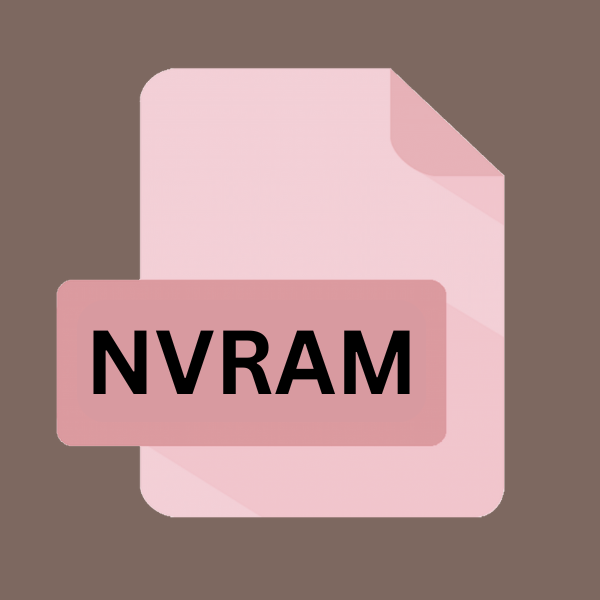.NVRAM File Extension

VMware NVRAM File
| Developer | VMware |
| Popularity | |
| Category | Data Files |
| Format | .NVRAM |
| Cross Platform | Update Soon |
What is an NVRAM file?
In the realm of virtualization, where software emulates hardware to create virtual machines (VMs), files with the .NVRAM extension plays a crucial role.
These files, known as VMware NVRAM files, are essential components in VMware virtualization environments. Understanding their origin, structure, and functionality is key to the efficient management of virtualized systems.
More Information.
VMware introduced NVRAM files to address the need for persistent storage of VM BIOS/UEFI settings. In traditional computing, BIOS/UEFI settings are stored in non-volatile memory on physical hardware.
With virtualization, there arose a need for a similar mechanism to store and maintain these settings for virtual machines.
Origin Of This File.
The .NVRAM file extension is primarily associated with VMware virtualization software, which enables the creation and management of virtual machines.
These files store the state of a VM’s BIOS or UEFI firmware, including settings like boot order, system time, and hardware configurations. This ensures that VMs retain their configurations even after power cycles or reboots.
File Structure Technical Specification.
.NVRAM files typically contain binary data representing the BIOS/UEFI firmware settings of a virtual machine. While the exact structure may vary based on VMware’s specifications and updates.
These files generally encapsulate parameters such as boot device sequence, CPU configuration, memory settings, and more.
How to Convert the File?
Converting .NVRAM files may be necessary in certain scenarios, such as migrating VMs between different virtualization platforms or resolving compatibility issues. Here’s a general guideline on how to handle .NVRAM files:
- Backup Original File: Always create a backup of the original .NVRAM file before attempting any conversions.
- Identify Conversion Need: Determine whether you’re migrating VMs or modifying settings for compatibility.
- Use VMware Tools: Modify .NVRAM files within VMware Workstation or VMware Fusion by accessing BIOS/UEFI settings.
- Explore Third-Party Tools: Research and utilize third-party conversion tools if you’re switching virtualization platforms.
- Manual Editing (Advanced): Advanced users can manually edit .NVRAM files using text or hex editors, but caution is advised.
- Understand File Structure: Familiarize yourself with the .NVRAM file format and BIOS/UEFI settings it contains.
- Make Changes Carefully: Ensure changes are made accurately to avoid corruption or compatibility issues.
- Test Thoroughly: After conversion or modification, extensively test the .NVRAM file to ensure proper functionality.
- Verify Compatibility: Confirm that the converted .NVRAM file works seamlessly within the virtualized environment.
- Maintain Documentation: Keep records of conversions and modifications for future reference and troubleshooting.
Advantages And Disadvantages.
Advantage:
- Persistence: .NVRAM files ensure that VM settings remain intact across reboots and power cycles.
- Flexibility: They allow administrators to easily modify BIOS/UEFI settings without accessing physical hardware.
- Compatibility: .NVRAM files are compatible across different VMware platforms, ensuring seamless migration and deployment of VMs.
Disadvantage:
- File Size: Depending on the complexity of VM configurations, .NVRAM files can consume significant storage space.
- Maintenance Overhead: Managing numerous .NVRAM files across multiple VMs can become cumbersome, especially in large-scale environments.
- Dependency: Any corruption or loss of .NVRAM files can potentially disrupt VM functionality and require manual intervention to restore settings.
How to Open NVRAM?
Open In Windows
Use VMware Workstation or VMware Player on Windows to manage and modify .NVRAM files.
Open In Linux
Install VMware Workstation or VMware Player for Linux to access and edit .NVRAM files.
Open In MAC
Utilize VMware Fusion, the macOS counterpart of VMware Workstation, to handle .NVRAM files.
Open In Android
Accessing and managing .NVRAM files directly on Android devices aren’t feasible due to the lack of compatible virtualization software.
Open In IOS
There are no specific apps available on iOS for direct handling .NVRAM files.
Open in Others
For other operating systems not covered (e.g., BSD variants), follow similar procedures as outlined for Windows, Linux, and macOS using compatible virtualization software tailored for those platforms.













